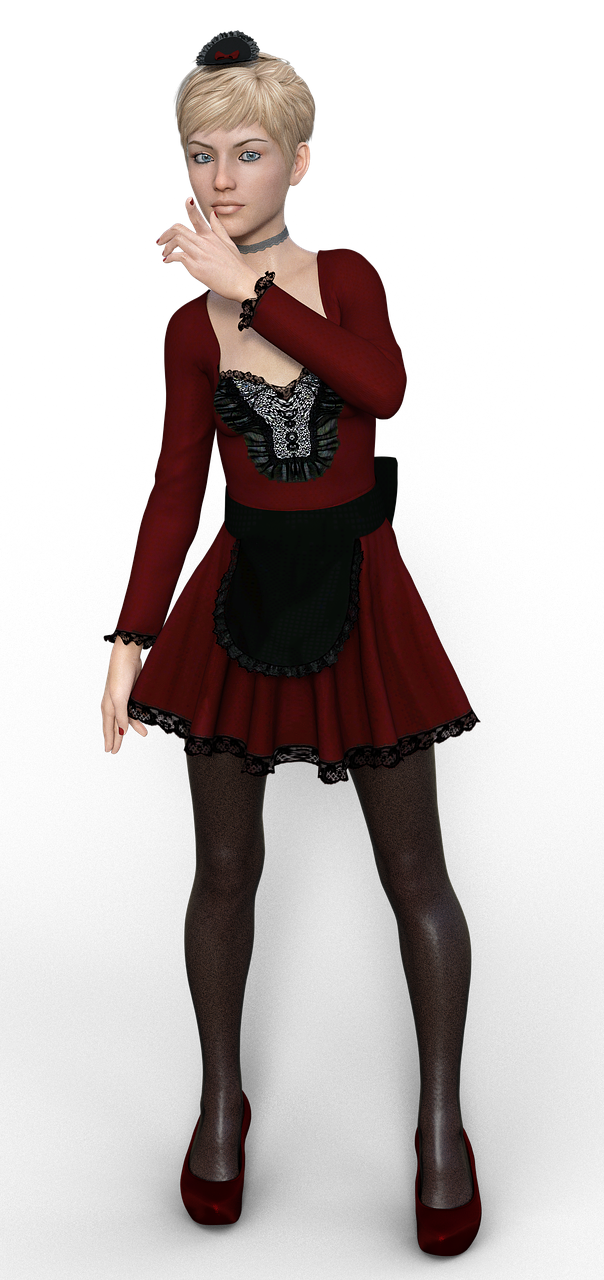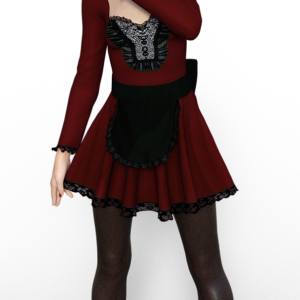Have you ever found yourself in need of a professional and creative graphic designer? Look no further! We specialize in providing graphic design services catered towards businesses and individuals who are seeking top-notch logos, stunning marketing materials, and more. With our expertise and attention to detail, we guarantee to bring your visions to life and help you make a lasting impression in the digital world. Whether you’re a small startup or a well-established company, our friendly team is here to assist you every step of the way. Let’s embark on a journey of creativity and impact together.
Logo Design
Understanding the client’s brand identity
When it comes to logo design, understanding the client’s brand identity is crucial. Before starting any design work, it’s important to have a clear understanding of what the client wants to convey through their logo. This involves researching their target audience, industry, and competitors. By understanding the client’s brand values, mission, and unique selling points, you can create a logo that accurately represents their brand and resonates with their target market.
Designing custom logos
Once you have a solid understanding of the client’s brand identity, you can start designing custom logos. Custom logos are tailored to each client and are created from scratch, ensuring that they are unique and exclusive to the client’s brand. This involves brainstorming different concepts, sketching ideas, and experimenting with various font styles, colors, and shapes. By creating custom logos, you can provide clients with a design that truly represents their brand and sets them apart from their competitors.
Providing multiple design options
To give clients the opportunity to choose the best logo for their brand, it’s important to provide multiple design options. This involves creating different variations of the logo, each with a unique combination of fonts, colors, and layouts. By presenting clients with multiple design options, you can give them the freedom to compare and choose the logo that aligns best with their brand identity and appeals to their target audience.
Iterating based on client feedback
Client feedback is an essential part of the logo design process. After presenting the initial design options, it’s important to gather feedback from the client and iterate on the designs based on their input. This could involve making adjustments to the font, color palette, or layout, or even exploring completely different design directions. By actively involving the client in the design process and accommodating their feedback, you can ensure that the final logo design meets their expectations and effectively represents their brand.
Delivering high-resolution logo files
Once the client is satisfied with the final logo design, it’s time to deliver the high-resolution logo files. These files are essential for the client to use the logo across different mediums and platforms, both online and offline. Delivering high-resolution logo files ensures that the client has access to the logo in the best possible quality, allowing for seamless integration into websites, printed materials, social media profiles, and more. By providing high-resolution logo files, you can ensure that the client’s brand is consistently represented across all touchpoints.
Marketing Materials
Creating visually appealing brochures
Brochures are a powerful marketing tool that can effectively communicate a brand’s message and engage potential customers. When creating brochures, it’s important to focus on creating visually appealing designs that capture the attention of the audience. This involves using eye-catching colors, high-quality images, and well-organized layouts. By designing brochures that are visually appealing, you can help businesses showcase their products or services in a professional and persuasive manner.
Designing flyers and posters
Flyers and posters are excellent marketing materials for promoting events, special offers, or new products. The key to designing effective flyers and posters is to create designs that are attention-grabbing and easy to read. This involves using bold typography, vibrant images, and clear messaging. By designing flyers and posters that are visually appealing and informative, businesses can attract the attention of potential customers and generate interest in their offerings.
Developing business cards
Business cards are an essential networking tool that can leave a lasting impression on potential clients, partners, or investors. When designing business cards, it’s important to create designs that are professional, memorable, and reflective of the brand’s identity. This involves using a cohesive color palette, incorporating the logo, and providing essential contact information in a clear and organized manner. By developing business cards that effectively represent the brand and stand out from the competition, businesses can leave a positive and lasting impression on those they encounter.

Designing banners and signage
Banners and signage play a crucial role in promoting businesses and attracting customers to physical locations. Whether it’s a storefront sign, a trade show banner, or an outdoor billboard, designing visually appealing and impactful banners and signage is essential. This involves creating designs that are easily readable from a distance, utilizing bold colors, and incorporating eye-catching imagery. By designing banners and signage that effectively grab attention and communicate the brand’s message, businesses can increase their visibility and attract more customers.
Crafting professional presentations
Presentations are an important tool for businesses to communicate their ideas, products, or services. When crafting professional presentations, it’s important to create designs that are not only visually appealing but also support the content being presented. This involves using engaging visuals, clear typography, and cohesive branding elements. By crafting professional presentations that are visually engaging and well-designed, businesses can effectively convey their message and leave a lasting impression on their audience.
Branding Services
Developing brand guidelines
Brand guidelines are a set of rules and standards that define how a brand should be presented visually. When developing brand guidelines, it’s important to create a comprehensive document that includes guidelines for logo usage, typography, color palette, imagery style, and more. By developing brand guidelines, businesses can ensure consistency and coherence in their visual branding efforts, whether it’s in marketing materials, social media graphics, or website design.
Creating cohesive visual elements
Cohesive visual elements are crucial for maintaining a strong and recognizable brand identity. This involves creating a consistent and harmonious visual style across all brand materials. From font choices to color palettes, imagery styles to graphic elements, creating cohesive visual elements ensures that all brand materials reflect the brand’s identity and values. By creating cohesive visual elements, businesses can reinforce their brand image and build stronger connections with their target audience.
Designing branded merchandise
Branded merchandise, such as t-shirts, mugs, or stationery, can be a powerful way for businesses to increase brand visibility and foster customer loyalty. When designing branded merchandise, it’s important to create designs that are not only visually appealing but also align with the brand’s identity. This involves incorporating the logo, using consistent colors and typography, and choosing merchandise that resonates with the target audience. By designing branded merchandise that effectively represents the brand, businesses can create a sense of unity and recognition among their customers.
Crafting consistent social media graphics
Social media platforms are a valuable marketing tool for businesses to connect with their audience. When designing social media graphics, it’s important to create consistent designs that align with the brand’s image and resonate with the target audience. This involves using consistent branding elements, such as colors, fonts, and graphic styles, across all social media platforms. By crafting consistent social media graphics, businesses can establish a strong and recognizable brand presence online and maintain a cohesive visual identity.
Ensuring brand consistency across platforms
Consistency is key when it comes to branding. It’s important to ensure that the brand’s visual identity is consistent across all platforms, whether it’s the website, social media profiles, or printed materials. This involves using the same logo, color palette, typography, and imagery style across all touchpoints. By ensuring brand consistency across platforms, businesses can reinforce their brand’s identity and create a cohesive and memorable brand experience for their audience.
Website Design
Designing aesthetically pleasing layouts
When designing websites, it’s important to create aesthetically pleasing layouts that are visually appealing and engaging for users. This involves considering factors such as color schemes, typography, and imagery. By designing aesthetically pleasing layouts, businesses can create a positive first impression and encourage users to explore their website further.

Creating user-friendly navigation
User-friendly navigation is essential for a positive user experience on a website. When designing websites, it’s important to create intuitive navigation menus that are easy to use and understand. This involves organizing the content in a logical manner and providing clear navigation options. By creating user-friendly navigation, businesses can enhance the usability of their website and ensure that users can easily find the information they are looking for.
Integrating brand elements into the design
Integrating brand elements, such as the logo, color palette, and typography, into the website design is crucial for maintaining brand consistency. By using consistent branding elements, businesses can reinforce their brand’s identity and create a cohesive visual experience for users. This involves incorporating the logo in the header or footer, using the brand’s colors for buttons and links, and using the brand’s typography throughout the website.
Optimizing for mobile responsiveness
In today’s mobile-centric world, it’s essential to design websites that are optimized for mobile responsiveness. This involves creating designs that adapt and respond to different screen sizes and resolutions. By optimizing for mobile responsiveness, businesses can ensure that their website looks and functions smoothly on all devices, providing users with a seamless browsing experience.
Collaborating with web developers
Effective website design often involves collaboration with web developers. While graphic designers focus on the visual aspects of the website, web developers bring the designs to life by coding and implementing the website’s functionality. By collaborating with web developers, businesses can ensure that the design is effectively translated into a functional and user-friendly website.
Packaging Design
Designing attractive product packaging
Designing attractive product packaging is essential for capturing the interest and attention of consumers. When designing product packaging, it’s important to create designs that are visually appealing and align with the brand identity. This involves considering factors such as color schemes, typography, and imagery. By designing attractive product packaging, businesses can enhance the perceived value of their products and entice consumers to make a purchase.
Ensuring packaging aligns with brand identity
Packaging design plays a vital role in conveying a brand’s identity and values. It’s important to ensure that the packaging aligns with the brand’s visual style, whether it’s using the brand’s colors, typography, or iconography. By aligning the packaging with the brand identity, businesses can reinforce their brand image and create a cohesive and recognizable presence on store shelves.
Considering functionality and practicality
While aesthetics are important in packaging design, it’s equally important to consider functionality and practicality. Packaging should not only look visually appealing but also be functional in terms of protecting the product and providing ease of use for the consumer. By considering functionality and practicality in packaging design, businesses can create packaging that enhances the overall customer experience and adds value to their product.
Creating eye-catching labels and stickers
In addition to the overall packaging design, labels and stickers play a key role in capturing attention and conveying important information. When designing labels and stickers, it’s important to create eye-catching designs that stand out on the packaging. This involves using bold colors, captivating imagery, and clear typography. By creating eye-catching labels and stickers, businesses can draw attention to their products and effectively communicate important details to consumers.

Providing mock-ups for client review
Before finalizing the packaging design, it’s important to provide mock-ups for client review. Mock-ups allow the client to visualize how the packaging design will look in real life and make any necessary adjustments or improvements. By providing mock-ups for client review, businesses can ensure that the final packaging design meets the client’s expectations and effectively represents their brand.
Print Design
Designing eye-catching print advertisements
Print advertisements are a traditional yet effective marketing tool for businesses to reach their target audience. When designing print advertisements, it’s important to create eye-catching designs that grab attention and communicate the brand’s message effectively. This involves using bold colors, compelling imagery, and engaging typography. By designing eye-catching print advertisements, businesses can capture the interest of their target audience and drive them to take action.
Creating informative product catalogs
Product catalogs are a valuable tool for businesses to showcase their offerings and provide detailed information to potential customers. When creating product catalogs, it’s important to create designs that are both visually appealing and informative. This involves organizing the product information in a clear and structured manner, using high-quality images, and incorporating consistent branding elements. By creating informative product catalogs, businesses can effectively promote their products and facilitate the purchasing process for customers.
Developing magazine and newspaper layouts
Designing magazine and newspaper layouts requires careful consideration of visual hierarchy, typography, and imagery. The layout should be visually appealing and organized in a way that guides readers through the content. This involves using grid systems, proper spacing, and consistent graphic styles. By developing captivating magazine and newspaper layouts, businesses can engage readers and effectively communicate their message.
Designing engaging event invitations
Event invitations are an important tool for businesses to generate interest and attract attendees to their events. When designing event invitations, it’s important to create designs that are engaging and represent the theme or purpose of the event. This involves using appropriate imagery, coordinating colors, and incorporating event details in a visually pleasing manner. By designing engaging event invitations, businesses can create a sense of excitement and encourage people to attend their events.
Producing high-quality print-ready files
To ensure that the print materials are reproduced accurately and at the highest quality, it’s important to produce high-quality print-ready files. This involves ensuring that the design files meet the technical specifications required for printing, such as resolution, color mode, and bleed. By producing high-quality print-ready files, businesses can ensure that their print materials are produced to the highest standard and accurately represent their brand.
Social Media Graphics
Creating visually consistent social media posts
Social media is a visual platform, and creating visually consistent social media posts is key to maintaining a cohesive and recognizable brand presence. When creating social media posts, it’s important to use consistent branding elements such as colors, fonts, and graphic styles. By creating visually consistent social media posts, businesses can strengthen their brand identity and create a cohesive visual experience for their audience.
Designing attention-grabbing cover photos
Cover photos are the first thing users see when visiting a social media profile, making it essential to design attention-grabbing cover photos. When designing cover photos, it’s important to create designs that are visually compelling and representative of the brand. This involves using eye-catching imagery, incorporating the brand’s logo or tagline, and utilizing cohesive branding elements. By designing attention-grabbing cover photos, businesses can make a memorable first impression and encourage users to explore their social media profiles further.

Developing custom social media templates
Creating custom social media templates can save time and maintain consistency when it comes to creating social media graphics. By developing templates, businesses can establish a consistent layout and style for their social media posts. This involves designing templates that incorporate the brand’s colors, typography, and logo, allowing for easy customization with different content. By developing custom social media templates, businesses can streamline their social media content creation process and maintain a cohesive visual presence.
Crafting shareable infographics
Infographics are a powerful way to convey complex information in a visually appealing and easy-to-understand manner. When crafting infographics, it’s important to create designs that are both informative and shareable. This involves organizing information into clear sections, using engaging visuals and icons, and incorporating the brand’s design elements. By crafting shareable infographics, businesses can increase the reach of their content and establish themselves as thought leaders in their industry.
Resizing graphics for different platforms
Each social media platform has its own specific image size requirements. When creating social media graphics, it’s important to resize the graphics to fit the dimensions of each platform. This involves adapting the design to fit within the specified aspect ratios and cropping or resizing images accordingly. By resizing graphics for different platforms, businesses can ensure that their social media posts look professional and are displayed correctly on each platform.
Illustrations
Creating original illustrations
Original illustrations can add a unique and personal touch to any design. When creating original illustrations, it’s important to understand the client’s vision and requirements. This involves sketching ideas, refining concepts, and digitally creating the final illustrations. By creating original illustrations, businesses can enhance their visual branding efforts and differentiate themselves from their competitors.
Designing custom icons and symbols
Custom icons and symbols can help convey information or add visual interest to designs. When designing custom icons and symbols, it’s important to design them in a cohesive style that aligns with the brand’s identity. This involves creating icons and symbols that are visually consistent with the overall design and easily recognizable. By designing custom icons and symbols, businesses can enhance the usability and visual appeal of their designs.
Crafting digital or hand-drawn artwork
Digital or hand-drawn artwork can bring a unique and organic feel to designs. Whether it’s digital illustrations created using graphic design software or hand-drawn artwork scanned and digitized, crafting digital or hand-drawn artwork requires a combination of creativity and technical skill. By crafting digital or hand-drawn artwork, businesses can create designs that stand out and capture the attention of their audience.
Developing illustrations for books or comics
Illustrations play a crucial role in books and comics, helping to bring stories and characters to life. When developing illustrations for books or comics, it’s important to understand the narrative and create visuals that enhance the storytelling. This involves sketching characters, creating captivating environments, and incorporating details that complement the text. By developing illustrations for books or comics, businesses can enrich the reading experience and captivate readers.
Working with various illustration styles
Illustration styles can vary greatly, ranging from minimalistic and clean to detailed and realistic. When working with various illustration styles, it’s important to understand the client’s preferences and requirements. This involves adapting the illustration style to fit the specific project, whether it’s a children’s book, a website illustration, or a magazine cover. By working with various illustration styles, businesses can cater to different visual preferences and create designs that resonate with their target audience.
Photo Editing
Retouching and enhancing photos
Photo retouching and enhancement can help improve the quality and visual appeal of photographs. When retouching and enhancing photos, it’s important to make subtle adjustments to correct imperfections, enhance colors and tones, and improve overall composition. By retouching and enhancing photos, businesses can ensure that their visual materials, such as product images or promotional photographs, look professional and visually appealing.
Removing backgrounds or objects
Removing backgrounds or objects from photos can be necessary to create a clean and focused image. Whether it’s removing a distracting background or eliminating unwanted elements, it’s important to carefully and accurately remove backgrounds or objects while maintaining the integrity of the image. By removing backgrounds or objects from photos, businesses can create images that are visually pleasing and highlight the subject.
Adjusting colors and tones
Color and tone adjustments are essential for creating visually appealing and cohesive images. When adjusting colors and tones, it’s important to strike a balance and ensure that the image looks natural and consistent. This involves correcting white balance, enhancing colors, adjusting exposure and contrast, and fine-tuning the overall aesthetic. By adjusting colors and tones, businesses can create images that accurately represent their brand and evoke the desired emotions in viewers.
Applying special effects or filters
Applying special effects or filters to photos can add a creative and artistic touch to images. Whether it’s adding a vintage effect, a film grain texture, or a color overlay, it’s important to apply special effects or filters in a way that enhances the image without overpowering it. By applying special effects or filters, businesses can create images that stand out and evoke a specific mood or aesthetic.
Resizing and cropping images
Resizing and cropping images is often necessary to fit the requirements of different mediums and platforms. When resizing and cropping images, it’s important to maintain the aspect ratio and ensure that the composition remains balanced. This involves scaling down or up the image size and cropping out any unnecessary elements. By resizing and cropping images, businesses can ensure that their visual materials are optimized for different platforms and effectively communicate their message.
Infographics
Transforming complex data into visual representations
Infographics are a powerful way to transform complex data into visually appealing and easy-to-understand representations. When transforming complex data into infographics, it’s important to analyze the data and identify the key insights or trends. This involves organizing the data into meaningful sections, choosing appropriate visuals, and designing a layout that effectively communicates the information. By transforming complex data into visual representations, businesses can make information more accessible and engaging for their audience.
Creating informative and engaging infographics
Infographics should not only be visually appealing but also informative and engaging. When creating infographics, it’s important to provide accurate and relevant information in a concise and visually appealing manner. This involves using clear and easy-to-read typography, incorporating icons or illustrations to support the content, and organizing information in a logical flow. By creating informative and engaging infographics, businesses can effectively communicate complex information and capture the attention of their audience.
Designing visually appealing charts and graphs
Charts and graphs are essential elements of infographics that help visualize data and statistics. When designing charts and graphs, it’s important to choose appropriate chart types that effectively represent the data. This involves selecting the right colors, adjusting the scale and axis, and making the labels clear and concise. By designing visually appealing charts and graphs, businesses can enhance the visual appeal and clarity of their infographics.
Making information more accessible and understandable
The purpose of infographics is to make information more accessible and understandable for the audience. When creating infographics, it’s important to simplify complex concepts or data and present them in a clear and concise manner. This involves breaking down information into bite-sized chunks, using visuals to support the content, and providing relevant examples or comparisons. By making information more accessible and understandable, businesses can effectively educate and engage their target audience.
Customizing infographics to match brand style
Customizing infographics to match the brand’s style is essential for maintaining brand consistency and visual coherence. This involves incorporating the brand’s colors, typography, and design elements into the infographic design. By customizing infographics to match the brand style, businesses can reinforce their brand’s identity and create a cohesive and recognizable visual presence across all communication channels.
In conclusion, providing graphic design services for businesses or individuals in need of logos, marketing materials, and other visual assets is an essential aspect of modern branding and marketing efforts. Whether it’s logo design, marketing materials, branding services, website design, packaging design, print design, social media graphics, illustrations, photo editing, or infographics, each area requires a combination of creativity, technical skills, and an understanding of the client’s brand identity and audience. By offering comprehensive graphic design services, businesses can enhance their visual storytelling, strengthen their brand image, and effectively connect with their target market.

